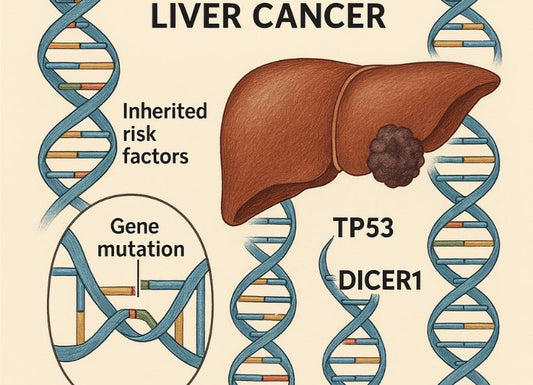Protein in Urine
 Written By
Analytics Delante
Written By
Analytics Delante

Protein in urine, also known as proteinuria, is a condition that involves the presence of an abnormal amount of protein in the urine. Understanding proteinuria is essential as it serves as a crucial indicator of kidney health and overall well-being. In this comprehensive guide, we will delve into the definition, significance, diagnosis, health implications, potential causes, risk factors, management, and prevention of protein in urine.
What is Proteinuria?
Proteinuria is a medical condition characterized by the presence of excess protein, primarily a type of protein called albumin, in the urine. Albuminuria, a specific type of proteinuria, refers to the presence of high levels of albumin, a protein normally found in the blood, in the urine. Proteinuria can indicate underlying kidney dysfunction and is often considered a sign of kidney disease. Testing for protein in urine can be done using kits from RibbonCheckup.com.
What causes Proteinuria
Proteinuria, the presence of excess protein in the urine, often does not cause noticeable symptoms on its own. In many cases, it is detected through routine urine tests conducted during medical check-ups or screenings for other health conditions. However, in some instances or if the underlying cause is severe, individuals with proteinuria may experience symptoms related to the underlying condition or kidney dysfunction. Below are some symptoms that may be associated with proteinuria:
-
Foamy or Frothy Urine:
-
One of the most common signs of proteinuria is the presence of foamy or frothy urine. This occurs because proteins, particularly albumin, form bubbles when they are expelled from the body through urine.
-
-
Swelling (Edema):
-
Proteinuria can lead to the retention of fluid in the body, resulting in swelling, particularly in the legs, ankles, feet, face, or hands. This swelling, known as edema, occurs because proteins help regulate fluid balance in the body, and when they are lost through urine, fluid accumulates in the tissues.
-
-
Fatigue and Weakness:
-
Proteinuria, especially when associated with kidney disease or dysfunction, can contribute to fatigue and weakness. This may occur due to decreased kidney function, resulting in the accumulation of waste products and toxins in the body, which can lead to feelings of lethargy and tiredness.
-
-
Foamy Urine:
-
In some cases, individuals with proteinuria may notice that their urine appears foamy or frothy. This foamy appearance is caused by the presence of excess protein, particularly albumin, in the urine, which can create bubbles when expelled from the body.
-
-
Difficulty Breathing:
-
Severe proteinuria, particularly when accompanied by conditions such as nephrotic syndrome, can lead to fluid buildup in the lungs (pulmonary edema), resulting in difficulty breathing, shortness of breath, or wheezing.
-
-
Hypertension (High Blood Pressure):
-
Proteinuria is often associated with hypertension or high blood pressure, which can exacerbate kidney damage and further contribute to protein loss in the urine. Individuals with uncontrolled high blood pressure may experience symptoms such as headaches, dizziness, or visual disturbances.
-
-
Changes in Urinary Frequency or Volume:
-
Proteinuria may also be accompanied by changes in urinary habits, such as increased urinary frequency, decreased urine output, or changes in the color or odor of urine. These changes may be indicative of underlying kidney dysfunction or urinary tract issues.
-
-
Abdominal Pain or Discomfort:
-
In some cases, proteinuria may be associated with kidney stones, urinary tract infections, or other kidney-related conditions that can cause abdominal pain or discomfort. This pain may be localized to the lower back or sides, where the kidneys are located.
-
It is important to note that while proteinuria itself may not always cause symptoms, it is often a sign of underlying kidney dysfunction or disease. Therefore, individuals who experience symptoms suggestive of kidney problems or who have risk factors for kidney disease should undergo medical evaluation, including urine tests, to assess kidney function and determine the appropriate course of action. Early detection and management of proteinuria and its underlying causes are essential for preserving kidney health and preventing complications.
See Related: What Is the Creatinine Level for Stage 3 Kidney Disease?
Types of Proteinuria
Proteinuria, the presence of protein in the urine, can manifest in various forms, each with its own underlying causes and implications. Understanding the types of proteinuria is essential for accurately diagnosing and managing kidney-related conditions. Below, we explore some common types of proteinuria:
-
Transient Proteinuria:
-
Transient proteinuria is a temporary elevation of protein levels in the urine and is often caused by factors such as fever, strenuous exercise, dehydration, or exposure to cold temperatures. It usually resolves on its own once the underlying cause is addressed and does not typically indicate significant kidney damage.
-
-
Orthostatic Proteinuria:
-
Orthostatic proteinuria is a condition in which protein levels in the urine increase when a person is in an upright position (standing or sitting) but return to normal when lying down. It is more commonly observed in adolescents and young adults and is usually benign, requiring no specific treatment.
-
-
Persistent Proteinuria:
-
Persistent proteinuria refers to a chronic elevation of protein levels in the urine and is often indicative of underlying kidney disease or dysfunction. It can be further classified based on the amount of protein present:
-
Microalbuminuria: Also known as incipient nephropathy, microalbuminuria involves the presence of small amounts of albumin in the urine and is an early sign of kidney damage, particularly in individuals with diabetes or hypertension.
-
Macroalbuminuria: Macroalbuminuria, also referred to as overt proteinuria, involves the excretion of larger amounts of albumin in the urine and is associated with more advanced kidney disease and an increased risk of progression to kidney failure.
-
-
-
Glomerular Proteinuria:
-
Glomerular proteinuria occurs when there is damage to the glomeruli, the tiny blood vessels in the kidneys responsible for filtering waste products and excess substances from the blood. Conditions such as glomerulonephritis, lupus nephritis, and diabetic nephropathy can lead to glomerular proteinuria, resulting in the leakage of proteins such as albumin into the urine.
-
-
Tubular Proteinuria:
-
Tubular proteinuria arises from dysfunction or damage to the renal tubules, the structures in the kidneys responsible for reabsorbing filtered substances back into the bloodstream. Disorders such as Fanconi syndrome, acute tubular necrosis, and certain medications can cause tubular proteinuria by impairing the tubular reabsorption of proteins.
-
-
Overflow Proteinuria:
-
Overflow proteinuria occurs when the kidneys are unable to effectively filter and reabsorb proteins due to an excessive amount of protein in the bloodstream. This may result from conditions such as multiple myeloma, where abnormal proteins accumulate in the blood and overwhelm the kidney's filtering capacity, leading to their excretion in the urine.
-
-
Functional Proteinuria:
-
Functional proteinuria refers to an increase in protein excretion due to non-pathological factors such as emotional stress, pregnancy, or exposure to extreme temperatures. Unlike pathological proteinuria, functional proteinuria does not typically indicate underlying kidney disease and often resolves spontaneously without treatment.
-
Understanding the different types of proteinuria is essential for healthcare providers to accurately diagnose underlying kidney conditions and implement appropriate management strategies. Whether transient, orthostatic, persistent, glomerular, tubular, overflow, or functional, identifying the specific type of proteinuria can guide treatment decisions and improve patient outcomes.
Significance of Protein in Urine
Detecting protein in urine is crucial as it serves as an essential marker of kidney function. The kidneys play a vital role in filtering waste products and excess substances from the blood, including proteins. When the kidneys are functioning properly, they prevent the loss of protein into the urine. However, when kidney function is impaired, proteins such as albumin may leak into the urine, resulting in proteinuria.
Diagnosing Proteinuria - The Role of Urine Tests
Urine tests, like those sold on RibbonCheckup.com including urinalysis and dipstick tests, play a pivotal role in diagnosing proteinuria. Urinalysis involves analyzing a urine sample for various substances, including proteins, using laboratory techniques. Dipstick tests, which are simpler and more convenient, can quickly detect the presence of protein in urine by changing color in response to protein levels.
Understanding Your Urine Dipstick Results
Interpreting urine dipstick results is essential for understanding the extent of proteinuria. While small amounts of protein in urine may be normal, high levels of protein can indicate kidney dysfunction or disease. Results are typically reported as trace, +1, +2, +3, or +4, with higher values indicating increasing levels of proteinuria.
Health Implications
Is Protein in Urine Serious?
Proteinuria can be a serious condition, as it often indicates underlying kidney damage or dysfunction. Chronic kidney disease (CKD), hypertension (high blood pressure), and nephrotic syndrome are just a few of the health conditions associated with proteinuria. Left untreated, proteinuria can progress to more severe kidney damage and increase the risk of kidney failure.
Potential Causes and Risk Factors

What foods cause high protein in urine?
Certain dietary factors, such as consuming excessive amounts of protein-rich foods, may temporarily increase protein levels in urine. However, persistent proteinuria is often associated with underlying medical conditions such as diabetes, hypertension, and kidney disease. Other risk factors for proteinuria include a family history of kidney disease, obesity, and smoking.
How to treat proteinuria
Reducing Protein in Your Urine
Lifestyle and dietary changes can help reduce protein in urine and improve kidney health. Following a balanced diet, maintaining a healthy weight, staying hydrated, and avoiding excessive alcohol consumption can all contribute to reducing proteinuria. Additionally, managing underlying health conditions such as diabetes and hypertension is essential for preventing further kidney damage.
Monitoring and Treating Underlying Conditions
Regular monitoring of kidney function through blood tests, urine tests (like those sold on RibbonCheckup.com), and check-ups is essential for managing proteinuria and underlying health conditions. Treatment options for proteinuria and associated conditions may include medication, lifestyle modifications, dialysis for severe cases of kidney failure, and kidney transplant for end-stage kidney disease.
Key Takeaways for Maintaining Kidney Health
In conclusion, protein in urine, or proteinuria, serves as an important indicator of kidney health and overall well-being. Understanding the significance of proteinuria, diagnosing it through urine tests, recognizing its health implications, identifying potential causes and risk factors, and implementing appropriate management and prevention strategies are all essential for maintaining kidney health and preventing complications associated with proteinuria. It is crucial to consult healthcare professionals for personalized advice and treatment recommendations based on individual health needs and circumstances.
Related Resources
- The Complete Guide to At-Home Kidney Function Tests
- What Indicates Renal Tubular Acidosis?
-
How to Protect Your Kidneys? Kidney Health Guide
References
Albuminuria: Albumin in the Urine - NIDDK. https://www.niddk.nih.gov/health-information/kidney-disease/chronic-kidney-disease-ckd/tests-diagnosis/albuminuria-albumin-urine
Chronic Kidney Disease Tests & Diagnosis - NIDDK. https://www.niddk.nih.gov/health-information/kidney-disease/chronic-kidney-disease-ckd/tests-diagnosis
Chronic Kidney Disease (CKD) - NIDDK. https://www.niddk.nih.gov/health-information/kidney-disease/chronic-kidney-disease-ckd
Can Dehydration Affect Your Kidneys? | National Kidney Foundation. https://www.kidney.org/newsletter/can-dehydration-affect-your-kidneys
ACR | National Kidney Foundation. https://www.kidney.org/kidneydisease/siemens_hcp_acr
Chronic kidney disease (CKD) - Symptoms, causes, treatment | National Kidney Foundation. https://www.kidney.org/atoz/content/about-chronic-kidney-disease
Proteinuria - StatPearls - NCBI Bookshelf. https://www.ncbi.nlm.nih.gov/books/NBK564390/
4. Kidneys and Autoimmune Disease - PMC. https://www.ncbi.nlm.nih.gov/pmc/articles/PMC4975267
Inflammatory Networks in Renal Cell Carcinoma - PMC. https://www.ncbi.nlm.nih.gov/pmc/articles/PMC10136567/
Protein in Urine (Proteinuria) Causes, Symptoms, Tests & Treatments | American Kidney Fund. https://www.kidneyfund.org/all-about-kidneys/other-kidney-problems/protein-urine
Kidney-friendly eating plan | American Kidney Fund. http://www.kidneyfund.org/kidney-disease/chronic-kidney-disease-ckd/kidney-friendly-diet-for-ckd.html
High Blood Pressure. http://www.kidneyfund.org/prevention/are-you-at-risk/high-blood-pressure.html

Author information not available.



